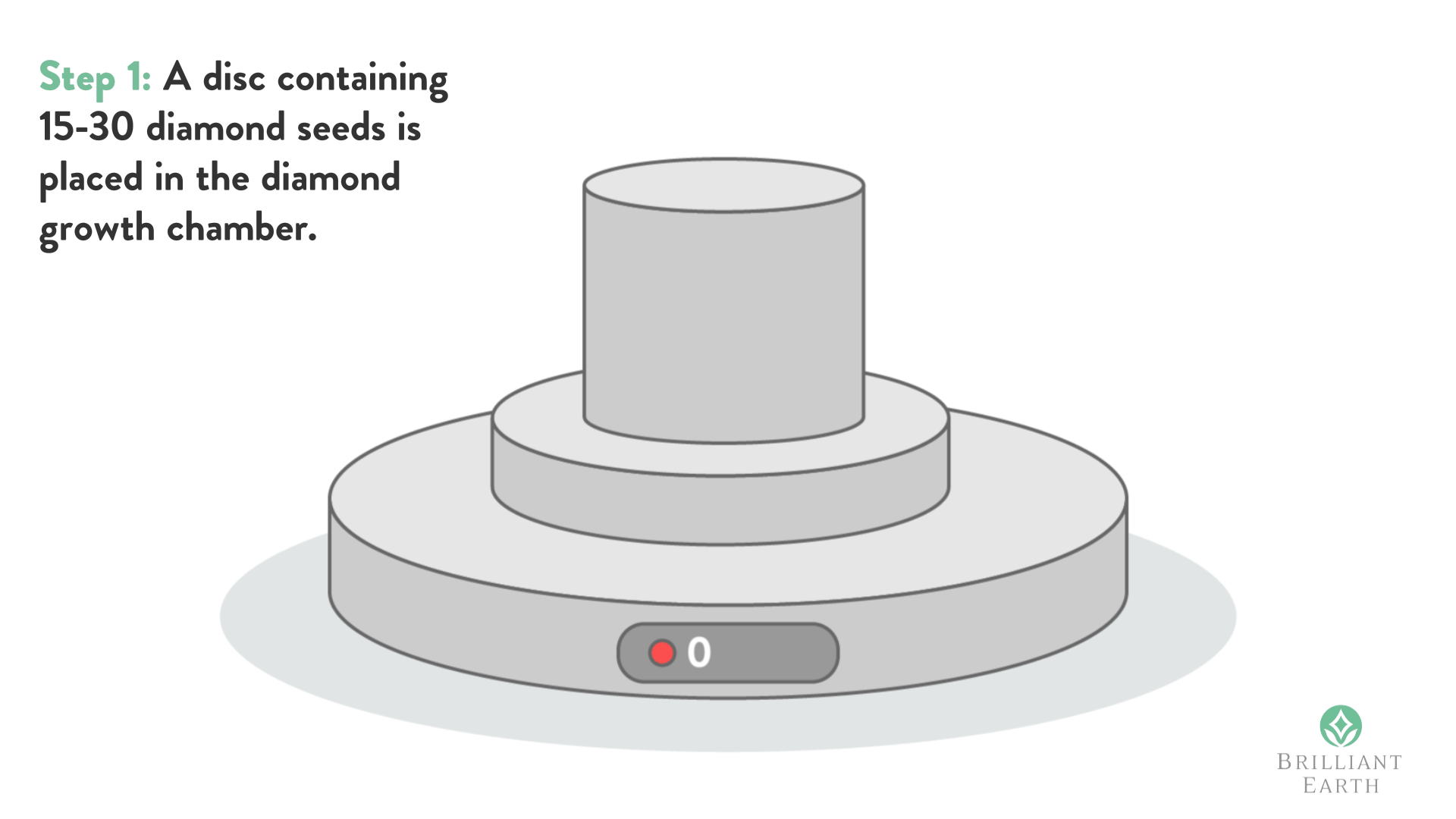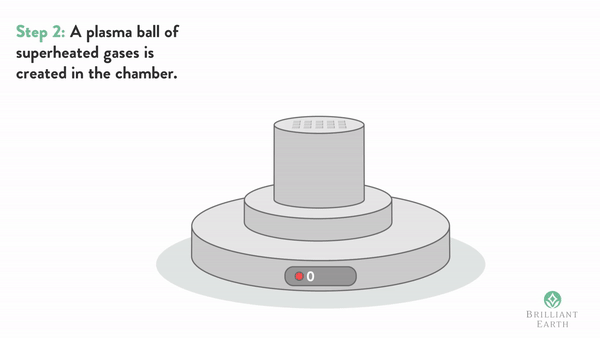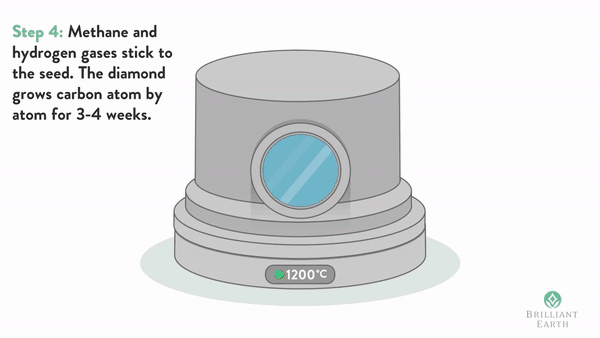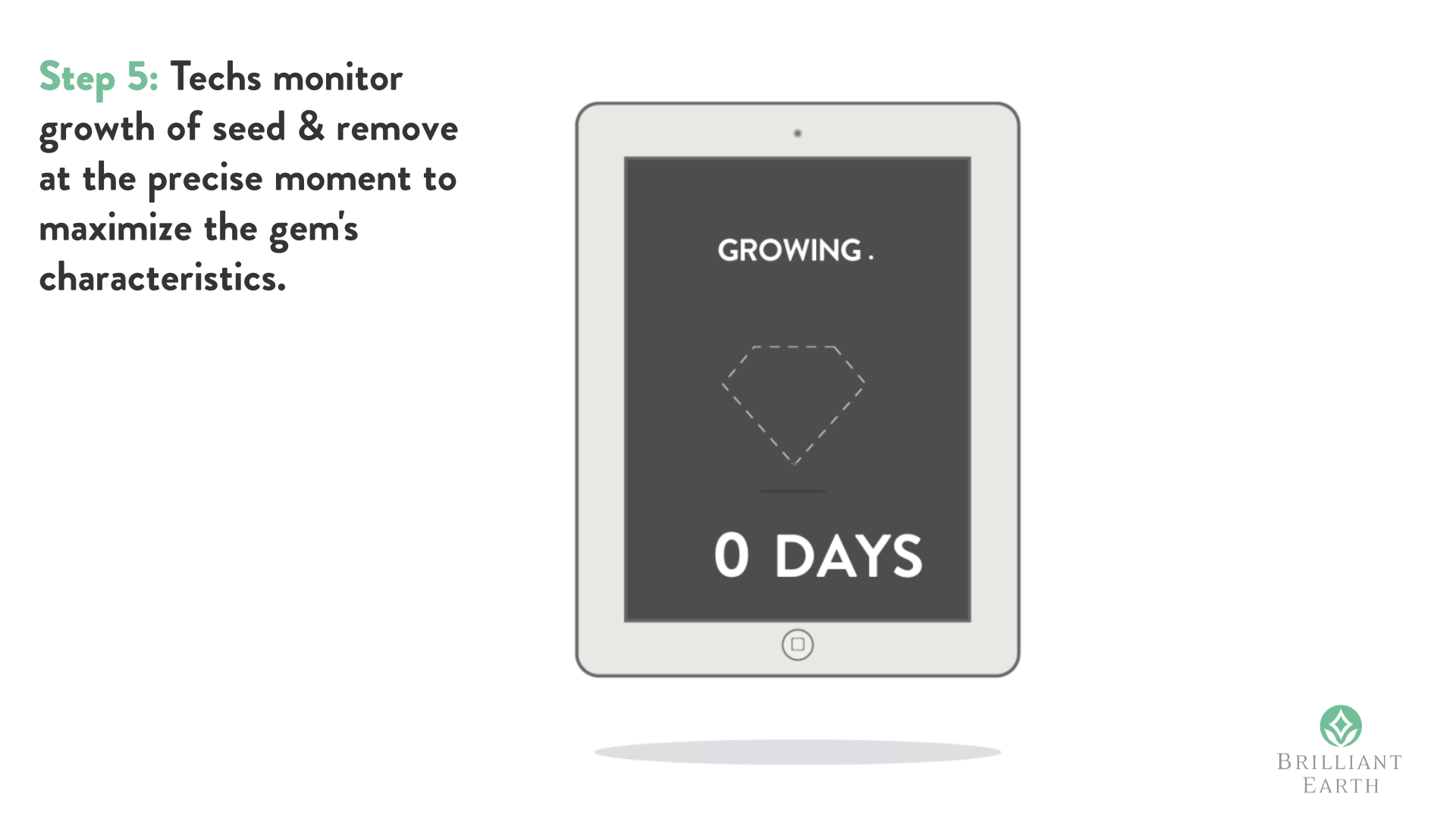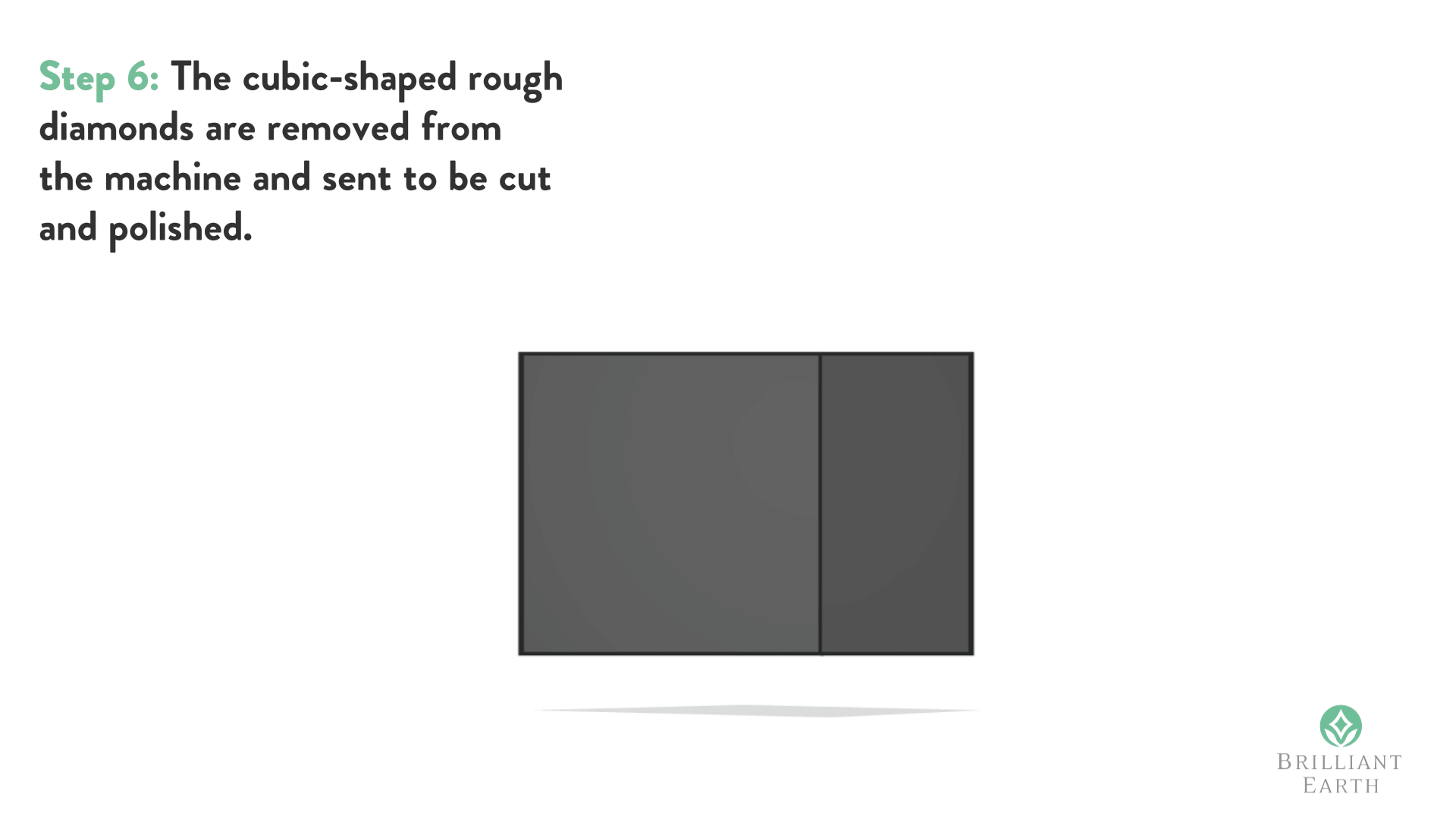In recent years, lab diamonds have been gaining a lot of traction. Lab diamonds, which have the same physical, chemical, and optical properties as mined diamonds, are slightly more affordable than natural diamonds of comparable size and quality. Plus, recent technological advances have made lab created diamonds more beautiful than ever. Their exceptional quality and value, coupled with the fact that they do not require any mining, make manmade diamonds a beautiful and eco-friendly choice.
But how exactly are lab diamonds made? We checked in with Brilliant Earth, the leader in ethically sourced bridal and fine jewelry to get some more information on lab diamonds. To help breakdown the process for us, they created some fun GIFs which explain the Chemical Vapor Deposition process (CVD) used to create high quality, wearable gems.
